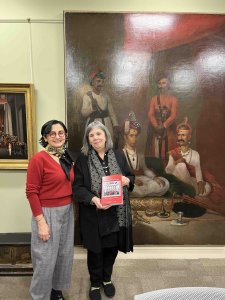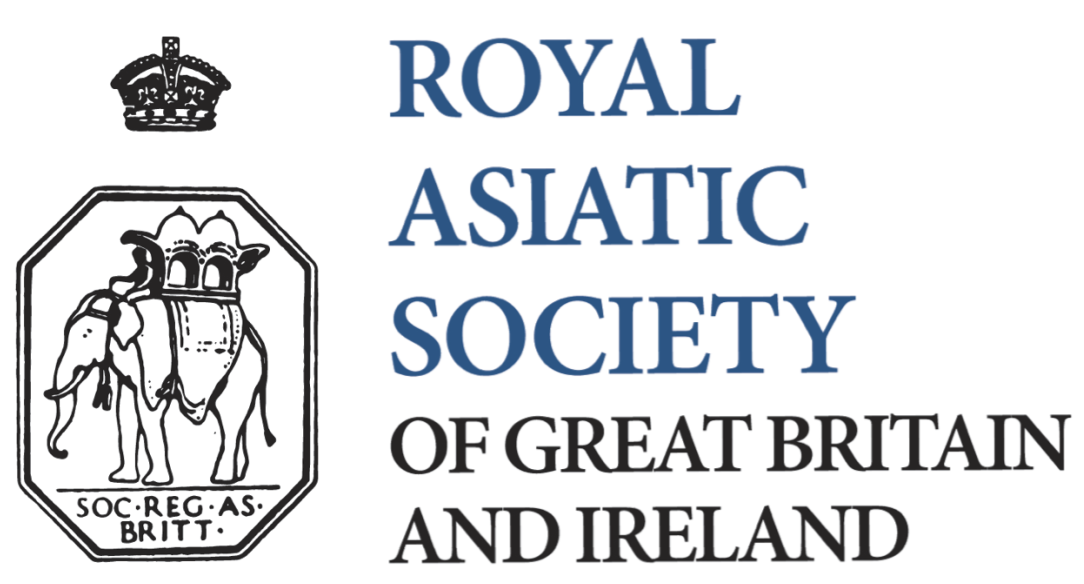New Cairo Museums, and Society Events
This week’s blog begins with a post from Dr Alison Ohta, the Society’s Director, following a recent visit to Cairo.
New Cairo Museums
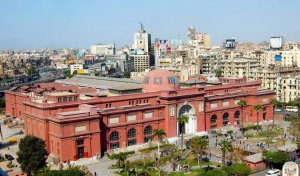
Since its establishment in 1902, The Egyptian Museum – distinguished by its distinctive brick red exterior and position on Tahrir Square – held sway as the most important museum in the world for Pharaonic antiquities. However, in recent years two other important museums have opened in Cairo, The National Museum of Egyptian Civilisation and the Grand Egyptian Museum, making important additions to the ‘must-see’ list for any visitor to Cairo.
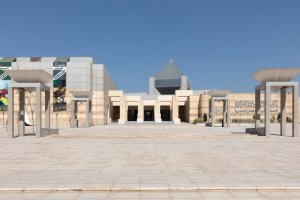
The National Museum of Egyptian Civilisation
The National Museum of Egyptian Civilisation opened in April 2021 in Old Cairo and its inauguration was marked by the moving of 22 mummies from the Egyptian Museum in what was described as the ‘Pharaoh’s Grand Parade’. The Museum provides an excellent introduction to Egypt, tracing its history from Pharaonic times through the Greco-Roman, Coptic, Medieval and Islamic periods to the present day. It also has a most interesting Textile Gallery of costumes and embroideries produced in Egypt which had been originally housed in the Textile Gallery in Al Mu’izz Street in downtown Cairo. If anyone ever wondered where Issey Miyake, the Japanese designer, may have got his inspiration for his pleated creations one has to look no further than Pharaonic Egypt where pleats were a distinctive feature of the linen robes worn by the elite. The ancient Egyptians called the white linen “Menkhet” which means excellent or splendid and considered it a symbol of elegance and purity. It was also the apparel of the sun god Re, which reflects his light that dazzles people with radiance and brilliance. Since the Pre-Dynastic Period, the ancient Egyptians were interested in decorating clothes, belts and headdresses made of white linen with plaits that covered the whole garment or covered the sleeves or the kilt only and were a symbol of the sun’s rays that envelope humans and surround them.
The ancient Egyptians made pleats in several ways. The weft threads were collected in small groups that were woven together on the edge of the cloth. Sometimes the clothes were washed in a resinous substance, and then the pleats were pressed firmly using a heavy tool. The pleats were often made by hand by washing the linen fabric and then squeezing it forcefully so that the warp threads gathered in groups to form the pleats, then this process was repeated after each washing. In the New Kingdom, weavers invented warping threads of varying thicknesses which makes the thin warp threads gather together after washing in wavy groups to form the pleats that decorate clothes. (This excellent description of pleating is taken from the label in the Museum.)
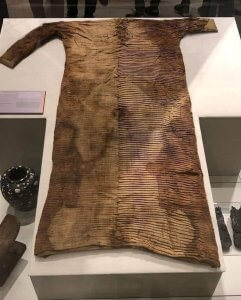

One item which particularly grabbed my imagination was this leather tent made of applique coloured leather in red, green and yellow and decorated with cut out leather ornaments and texts. It was made between 1046-1037 for the funerary purification of Isetemkheb II who was the daughter of the general and high priest Amun Masaherta. This was discovered in in 1881 in Deir el Bahri by Emile Brugsch and Ahmed Kemal and is the only Pharaonic leather tent that has survived. The coffin inside the baldachin on display is that of Isetemkheb’s cousin as her coffin was not found.
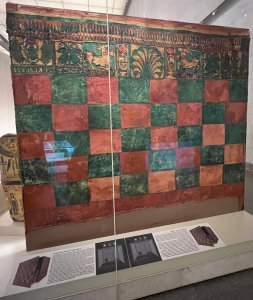
In addition, there are many other interesting items to be found including, of course, the mummies. The displays give the visitor a complete view of Egyptian history and civilisation from pre-history to the 20th century so, if anyone is contemplating a visit to Cairo, do visit this museum.
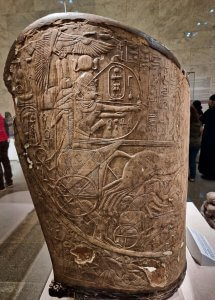
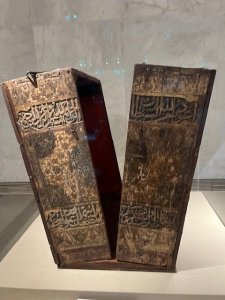

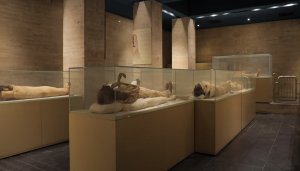
The Grand Egyptian Museum
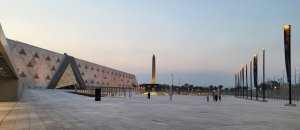
The opening of the Grand Egyptian Museum or GEM situated near the pyramids in Giza has been long awaited with much excitement. It was designed by Heneghan Peng architects of Ireland who apparently only had three members of staff when they won the competition. The project is estimated to have cost US$550 million and the foundation stone was laid in 2002. The Museum began limited public access in February 2023 and in October 2024 opened 12 main galleries including the Grand Hall and Staircase. It is planned that the Tutankhamun collection and solar boats will eventually be moved from the Egyptian Museum.
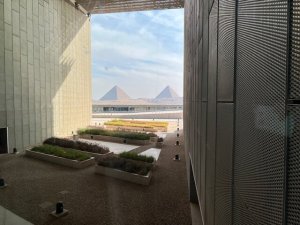
The first impression is one of sheer size as one approaches across a vast plaza. The main entrance is reached by a sloping courtyard containing the only hanging obelisk in existence of Ramses II from Tanis. Its companion graces the centre of Tahrir Square in Cairo. On entering one is greeted by a huge statue of Ramses II which was uncovered in 1882 at Memphis and then placed on Ramses Square outside Cairo’s main railway station in 1955 and moved in 2018 until it was moved here. Statues of various pharaohs and obelisks line the Grand Staircase leading upwards to the galleries (there is a lift and escalator for those who are not so able). From the top of the building one makes one’s way through the dynasties finishing in the Graeco Roman period. There is a myriad of material which attracts interest and the day I was there the galleries were filled with visitors from all over the world eagerly seeking the secrets of the pharaohs which have continued to amaze the world since antiquity.
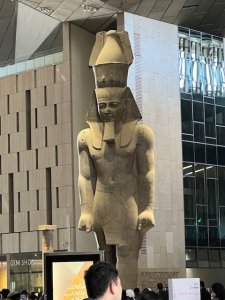

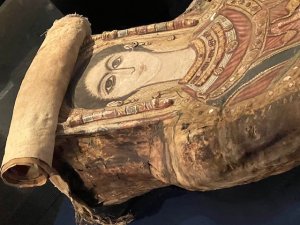
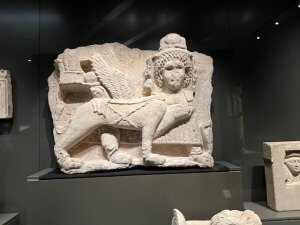
—
In other news, the Society recently held an event (Thursday 6 February) on ‘Silk Roads at the British Museum and British Library: Objects in Focus’, with speakers including Sue Brunning, Melodie Doumy, Yu-Ping Luk and Elisabeth O’Connell. Over the past several months, the Silk Roads have received the spotlight in London, with two concurrent exhibitions on this topic at the British Museum and the British Library. The British Museum exhibition Silk Roads takes audiences on a journey across Asia, Africa and Europe, exploring the movement of people, objects and ideas in the period 500 to 1000 CE; while the British Library exhibition A Silk Road Oasis: Life in Ancient Dunhuang transports visitors to the vibrant town of Dunhuang, a hub of trade, culture, and religion in present-day Northwest China, highlighting the experiences of those who lived, passed through, or left their mark there. In last week’s event, curators from the two exhibitions explained the thinking behind their respective shows, and shared insights into a few of the highlight objects on display. We hope those of you who have not yet been able to visit the exhibitions have the opportunity to do so before they close later this month.
The Society’s events program for 2025 is now in full swing, with a lecture this evening (Thursday 13 February) from Prof Kiri Paramore on ‘A Global History of Confucianism: The Cambridge History of Confucianism Volume I’. We are also pleased to announce that we will hold our next Collections Evening on Thursday 10 April, and are delighted to welcome several leading scholars who have been working with the Society’s manuscripts in the context of the recent bicentenary. Each has done invaluable work to help us better understand the background and significance of the Society’s collection. Accordingly, we look forward to welcoming Dr Annabel Teh Gallop to speak about manuscripts from maritime South East Asia, Dr Barbara Brend on the subject of Persian manuscripts, and Dr Alexandra Green on the topic of ‘Burmese manuscripts at the RAS: a reassessment’. We hope you will be able to join us for what promises to be a very special event.

Earlier this week, the Society was pleased to receive the donation of a new book by Supriya Law, titled Living with the past: the Law family of Calcutta. Recently published by Primus Books, Living with the past gives an insider’s view into the history of the Law family, which rose to prominence in the commercial world of mid-nineteenth to early twentieth century Calcutta. This study delves into the mercantile origins of the family, examines the functioning of the family firm, Messrs Prawn Kissen Law & Co. (established in 1839), and explores the religious life of the Laws. The family has a significant connection to the Royal Asiatic Society, notably through Bimala Churn Law (1892-1969), an Indologist who published many books on Buddhism, Jainism, and the history and geography of India. In 1935 he established the Dr B. C. Law Trust Fund at the RAS for the publication of works on Indology. The book was presented to the Society by Supriya’s cousin, Dr Sharmistha Law.
